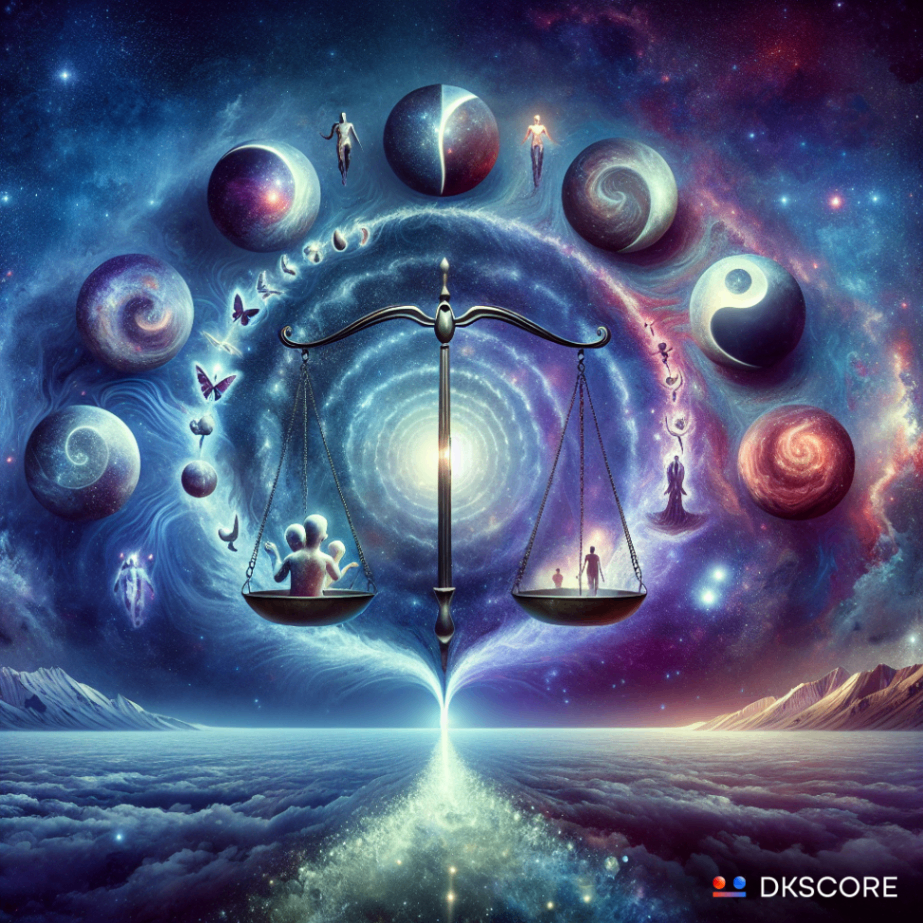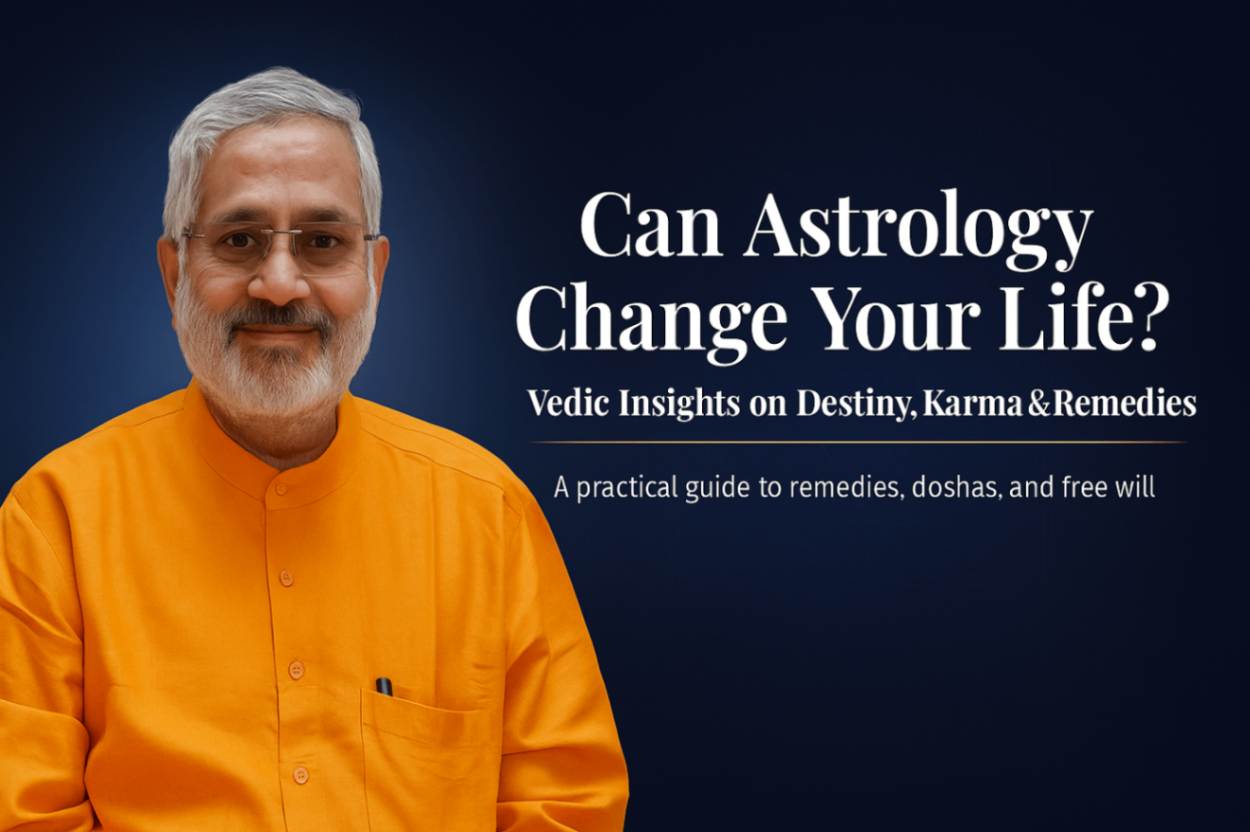Introduction
Welcome to an exploration of astrophilosophy and Jyotish (Vedic astrology). This article delves into the deeper aspects of life, destiny, and the purpose of birth, integrating astrological insights and Jyotish philosophy. We will unravel how these ancient principles help us understand our existence and navigate the complexities of life.
The Meaning of Life and Destiny
Beyond the Physical Existence
In Jyotish philosophy, life is seen as a journey of the soul through various incarnations. Each life is a step in the soul's evolution, influenced by karma (actions) and dharma (duty). Our physical existence is temporary, but the soul is eternal. The ultimate goal is to transcend the cycle of birth and death (samsara) and attain moksha (liberation).
The Role of Karma
Karma plays a central role in Jyotish philosophy. It refers to actions performed in past lives and their consequences in the present life. The Bhagavad Gita explains that karma leads to the development of material bodies and experiences. Our actions create karmic patterns that influence our future incarnations, perpetuating the cycle of birth and rebirth.
Understanding Nakshatras
Nakshatras, the 27 lunar mansions in Vedic astrology, provide a detailed map of our life journey. Each nakshatra has unique qualities that influence different aspects of life, from birth to spiritual enlightenment. By studying nakshatras, we gain insights into our personality, challenges, and transformations.
Life Stages Through Nakshatras
Ashwini (0-4 Years): Represents the initial stage of life, where we are dependent on others for support and development.
Bharani (4-7 Years): Marks the infant stage, characterized by rapid growth and transformation.
Krittika (7-10 Years): Corresponds to the early learning phase, where we acquire basic skills.
Rohini (10-14 Years): Signifies the stage of engaging with the material world and exploring new experiences.
Mrigashira (14-17 Years): Represents a period of heightened curiosity and eagerness to learn.
Ardra (17-20 Years): A time for analyzing and understanding various experiences.
Punarvasu (20-24 Years): The stage where emotions come to the forefront, and we develop a deeper sense of care and responsibility.
Pushya (24-28 Years): Symbolizes the onset of responsibility and commitment.
Ashlesha (28-32 Years): Marks the phase of facing the harsh realities of life and overcoming obstacles.
Magha (32-36 Years): Establishes our identity and individuality, leading to significant personal and professional milestones.
Purva Phalguni (36-40 Years): Represents a period of creativity, relaxation, and the search for partnerships.
Uttara Phalguni (40-45 Years): Focuses on taking up fixed roles in society and family.
Hasta (45-50 Years): A phase of immersion in worldly responsibilities and affairs.
Chitra (50-55 Years): Represents a period of creativity and manifestation.
Swati (55-60 Years): A time of business and commerce, achieving financial success.
Vishakha (60-65 Years): Symbolizes the gathering of wealth and resources.
Anuradha (65-70 Years): Marks a phase of gaining wisdom and understanding the deeper secrets of life.
Jyeshtha (70-75 Years): A period of pride and recognition, reflecting on achievements.
Moola (75-80 Years): Represents a time of spiritual awakening and detachment.
Purva Ashadha (80-85 Years): The phase of invincibility and sharing knowledge.
Uttara Ashadha (85-90 Years): A time to look at the bigger picture of life.
Shravana (90-95 Years): A period of listening and responding to the world's needs.
Dhanishta (95-100 Years): Represents the fulfillment of desires and abundance.
Shatabhisha (100-105 Years): Marks a time of seeking spiritual enlightenment.
Purva Bhadrapada (105-110 Years): Represents severe penance and sacrifice.
Uttara Bhadrapada (110-115 Years): Symbolizes the attainment of ultimate wisdom.
Revati (115-120 Years): The final stage of life, representing the merging of all dualities and the attainment of spiritual enlightenment.
Jyotish Philosophy and the Purpose of Birth
The Concept of Atman
Jyotish philosophy teaches that we are not just our physical bodies; we are the atman (soul). The atman is indestructible and eternal, journeying through various lifetimes. Our true purpose is to realize our divine nature and reconnect with the supreme consciousness.
Transcending the Cycle of Birth and Death
The ultimate goal in Jyotish philosophy is to transcend the cycle of birth and death and achieve moksha. This involves understanding and overcoming the karmic patterns that bind us to the material world. By aligning our actions with dharma and cultivating spiritual knowledge, we move closer to liberation.
The Role of Astrology in Self-Realization
Astrology serves as a map for our life's journey, highlighting karmic influences and opportunities for growth. By understanding our astrological chart, we gain insights into our strengths, weaknesses, and potential. This knowledge helps us navigate life's challenges and align with our higher purpose.
Integrating Jyotish Philosophy with Modern Life
Practical Applications
Astrology provides practical tools for improving various aspects of life, including relationships, career, and health. By understanding planetary influences, we can make informed decisions and take advantage of favorable periods. Remedies such as gemstones, mantras, and rituals can also help mitigate negative influences.
Holistic Approach
Jyotish philosophy encourages a holistic approach to life, integrating physical, mental, and spiritual well-being. Practices such as meditation, yoga, and Ayurveda complement astrology, promoting overall harmony and balance. By adopting this holistic approach, we align ourselves with the natural rhythms of the universe.
Personal Transformation
The insights gained from astrology can lead to profound personal transformation. By understanding our true nature and purpose, we can let go of limiting beliefs and behaviors. This journey of self-discovery ultimately leads to greater fulfillment and spiritual growth.
Conclusion
Jyotish philosophy offer deep insights into the meaning of life, destiny, and the purpose of birth. By understanding the karmic patterns and celestial influences that shape our lives, we can navigate our journey with greater clarity and purpose. The ultimate goal is to transcend the material world, realize our divine nature, and attain spiritual liberation. Through the wisdom of Jyotish, we can align with our higher self and fulfill our true potential.




















